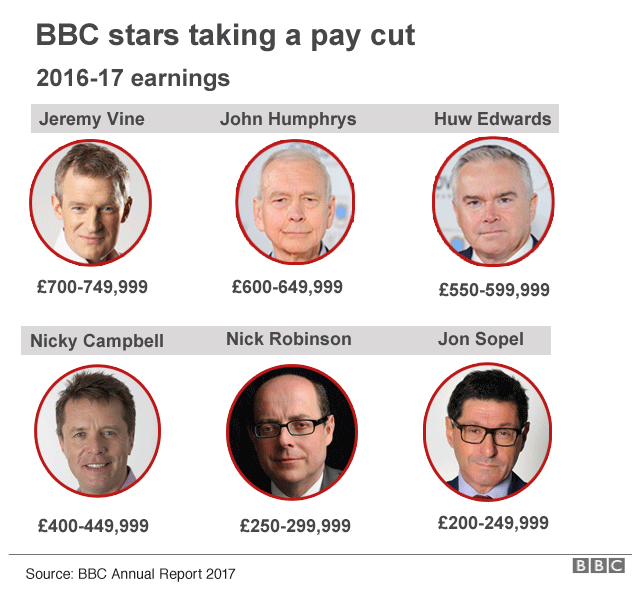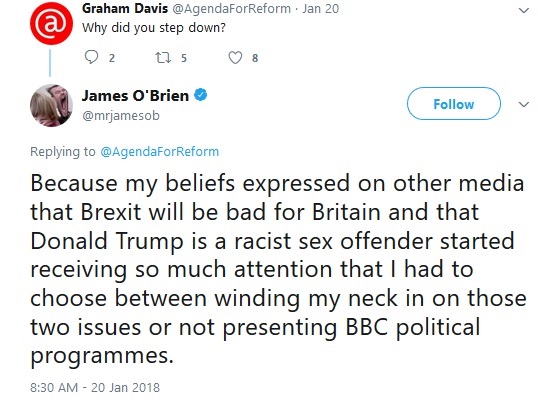Nick Robinson to Private Eye’s Ian Hislop…..
‘You fuel cynicism, you feed an idea that people are on the take, that they’re all the same, they’re in it for themeselves. The brew, if you like, that created populism.’
First of course is the implication that ‘populism’ is a bad thing…surely it is merely the people expressing themselves and making their desires known and implementing that by voting…or is that just democracy in a country that isn’t supposed to be ruled by a self-selected and entrenched elite? No, no, it’s evil populism.
Second….cynicism about politicians and those in positions of power and influence? Heaven forbid…but isn’t that exactly the role the Today show has given itself? Who is it that created the Frost Report and all those celebrated satirical shows that ripped a new one for the Great and the Good? The TV companies. It s ironically the inexorable rise of the new Media since the ’60’s and the oh so clever university boys and girls who created the cynicism and fed the ‘populism’. The BBC et al created the beast that they all now hate, just as mentioned in the last post they helped create the Muslim terrorist, and now, lol, the anti-Muslim terrorist, allegedly.
Just cheap, unintelligent, insinscere nonsense masquerading as journalism once again from Robinson who always sounds far too pleased with himself and the sound of his own voice.
Speaking of which…Andrew Marr. So fond of his own voice he didn’t have time to play a tape of Labour’s john McDonnell laughing about the proposed lynching of Esther McVey….Quite why the BBC continues to treat McDonnell and his fellow terrorist sympathisers at the head of Labour with so much respect is beyond me….just look at how they treat anyone who dares say anything about immigration or Islam, and then compare that to how they roll out the red carpet for Corbyn and Co.
Marr has been in the news elsewhere [H/T Craig at is the BBC biased?] expanding on a similar theme to Robinson’s….
The reign of Charles I shows that the 17th- century’s version of angry social media led to bloody violence
Hmmm….actually I think we could easily prove that the likes of the BBC give rise to bloody violence on our streets.
This is of course all part of the BBC’s [and the Left’s] attempt to maintain their dominance of the media and the news agenda, and to ensure it is they who define what is acceptable speech or comment, and of course the other motivation, to crush the new media, the Social Media, that is undermining their dominance….as noted by Douglas Murray…
To be opposed to ‘fake news’ is to award yourself not only the role of arbiter of what is true and what is fake, but the position of someone who is themselves putting out (or giving an imprimatur to) true news. It is a position that is enormously flattering. When the New York Times or CNN present themselves as opposing ‘fake news’ they suggest not only that they can identify what is false but that what they are putting out themselves is truthful. With digital platforms snapping at the old media’s heels, this is a particularly propitious meme for such media to push. The old media can suggest that while they hold the flame of truth it is the upstart new media who have let all the sluices up and allowed the whole pitch to be spoiled. This attitude is not just morally advantageous for them but also potentially financially advantageous. What a joy it is when these two things just happen to coincide.
Marr is at his sanctimonious best, or is that worst?, as he fills the empty page with inane insights that any one with half a brain cell could have come up with….and he proves if anything that the BBC’s narrative about ‘post-truth era’ and fake news is fake news itself….fake news has been around since forever…..a good example is this piece by Marr.
He ends with a priggish lecture to Trump…‘Got that Donald?’…how does Trump manage without Red Andy’s guiding hand?…..
It’s dangerous. In a new book about Trump’s America, two political scientists from Harvard, Steven Levitsky and Daniel Ziblatt, discuss “How Democracies Die”. In it they emphasise the importance of not just political rules but how we behave. These “soft guard rails” include mutual toleration or “the understanding that competing parties accept one another as legitimate rivals”. Got that, Donald?
So yes, we need basic civility and some mutual respect even when we disagree. This is going to be a difficult year. The last thing we need is a spitting arms race of abuse. History, as so often, tells us why.
Utter nonsense….Trump and his brashness are not a danger to democracy, he is the result of democracy in action and shows absolutely no sign of dictatorial tendencies and an urge to overthrow the US constitution….unlike it might be said the BBC and its friends who wish to enact a coup d’etat to unseat Trump. So who is the real enemy of democracy, the enemy of the people…Trump or the BBC? Marr likes to suggest Trump’s attack on the left-wing media is anti-democratic …how so? It is the media that is perverting democracy by its lies, misinformation and blatant attempts to rig politics to suit itself. On top of that is the fact that it is the Left’s identity politics agenda that has polarised society to such an extreme extent that nobody can talk civilly to each other now…the Left created the atmosphere and facts on the ground that views that are opposed to theirs are completely unacceptable and must be silenced and crushed.
Let’s not forget that some of the most virulent anti-Trump abuse has come from the BBC itself which set out to demonise and mock Trump throughout the election campaign and beyond, going so far as to report as fact stories that have absolutely no basis in truth and are completely unproven. No paradox that the BBC talks about the Russians interfering in the election and yet the BBC quite probably played far more of a damaging role in US politics than any Russian bot did.






